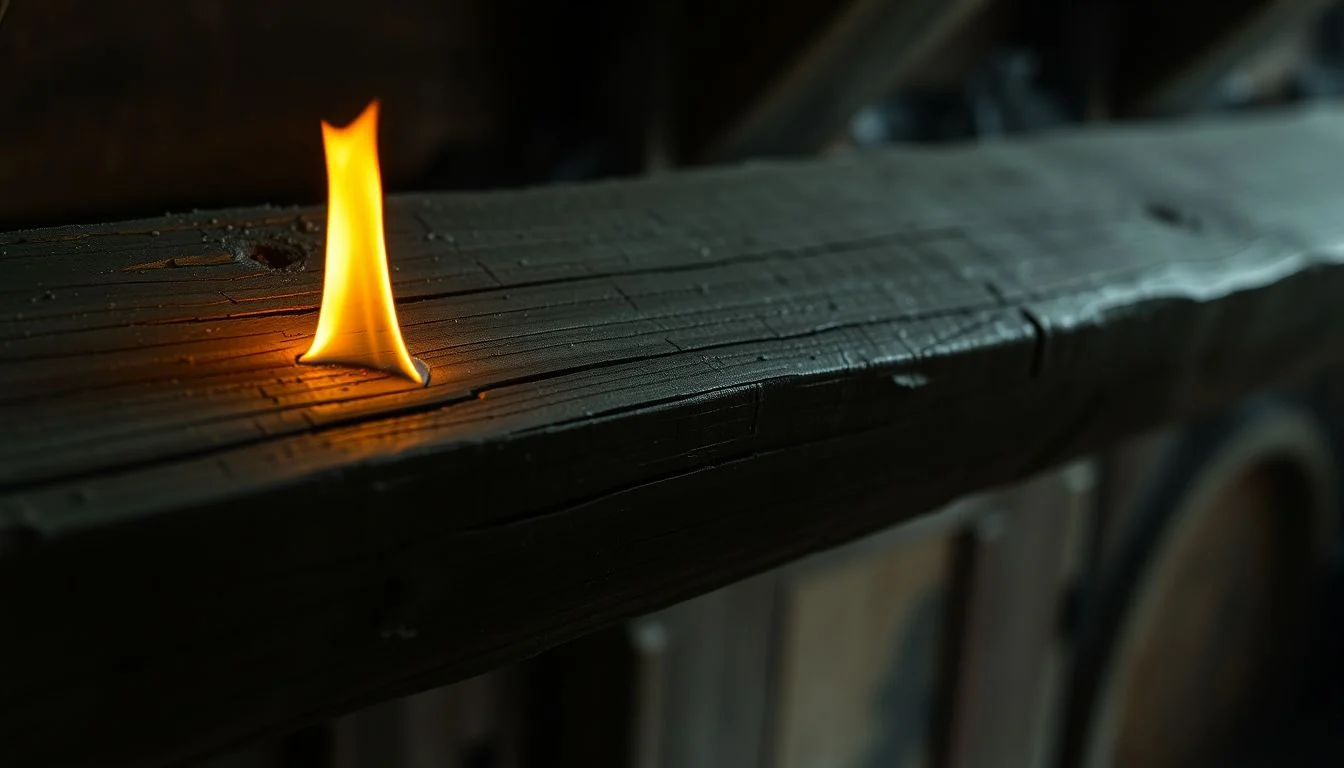Protect Wood: The Ultimate Guide to Fire Retardant Paint
Choosing fire retardant paint for wood is more than a style choice; it’s a safety measure. This guide covers why protecting your wood is essential, how fire retardant paint works, and how to apply it effectively.
Introduction: Why Choose Fire Retardant Paint for Wood?
The Dangers of Unprotected Wood and Fire
Wood is everywhere in our homes and businesses. While it's beautiful and versatile, it can also be highly flammable. Unprotected wood can ignite quickly when exposed to flames or high heat. Without proper treatment, the risk of fire damage increases significantly.
Statistics on Wood Fire Damage in Homes and Businesses
- According to fire safety statistics, wooden structures are responsible for nearly 40% of all fire incidents in residential buildings.
- Commercial properties with untreated wood face serious threats; they experience significant losses due to wood-related fires every year.
The Benefits of Investing in Fire Protection
Using fire retardant paint offers many benefits:
- Enhanced Safety: Reduces the risk of fire spreading.
- Insurance Incentives: May lower insurance premiums.
- Long-Term Value: Protects the structural integrity of your property.
Understanding Fire Retardant Paint Technology
How Fire Retardant Paint Works
Fire retardant paint forms a protective layer on wood. When exposed to flames, it releases gases that slow combustion and create a barrier. This process helps prevent flames from reaching the wood surface.
Different Types of Fire Retardant Paint for Wood
Fire retardant paint comes in several forms:
- Intumescent Paint: Swells when heated, forming an insulating layer.
- Cementitious Paint: Uses cement-based compounds for fire resistance.
- Coatings with Fire Inhibitors: Chemical additives that slow down combustion.
Key Ingredients and Their Functions
Key ingredients in fire retardant paints include:
- Phosphorus Compounds: Prevent burning.
- Nitrogen Compounds: Reduce flames and smoke.
- Chlorinated Compounds: Slow down ignition.
Choosing the Right Fire Retardant Paint for Your Needs
Assessing Your Specific Fire Risks
Consider your environment. Areas with higher fire risks may need advanced fire retardant options. Identify potential hazards and assess your needs.
Considering the Wood Type and Finish
Different wood types absorb paint differently. Softer woods like pine may require specific treatments compared to hardwoods. The finish chosen will also impact how well the paint adheres and performs.
Comparing Paint Properties: Durability, Appearance, and Application
Not all paints are created equal. Evaluate:
- Durability: How long will it last?
- Appearance: Does it maintain the natural look of wood?
- Application: Ease of use and drying time.
Applying Fire Retardant Paint: A Step-by-Step Guide
Surface Preparation: Cleaning, Sanding, and Priming
- Clean the Wood: Remove dirt and debris.
- Sand the Surface: Smooth out imperfections for better adhesion.
- Apply Primer: Choose a fire retardant primer for best results.
Application Techniques for Optimal Coverage
- Use a brush or roller for even coverage.
- Apply in thin layers, allowing for adequate drying time in between.
Drying Time and Multiple Coats
Drying time varies by product. Typically, waiting 2-4 hours between coats is recommended. Ensure each layer is completely dry before applying the next.
Maintaining Fire Retardant Paint on Wood
Regular Inspections for Damage or Wear
Check fire retardant surfaces regularly. Look for peeling, cracking, or any signs of wear. Addressing issues early can prevent larger problems later.
Re-application Schedule and Recommendations
Most fire retardant paints need reapplication every 5 to 10 years. Follow the product guidelines for specific recommendations.
Best Practices for Long-Term Fire Protection
- Keep painted surfaces clean.
- Address water damage promptly to retain the paint’s effectiveness.
- Avoid placing flammable materials against wooden surfaces.
Fire Retardant Paint vs. Other Fire Protection Methods
Comparing Costs and Effectiveness of Different Methods
Fire retardant paint can be more cost-effective than structural changes. Other methods, like installing sprinklers or fire-resistant materials, can be pricier and more invasive.
When Fire Retardant Paint is the Best Solution
Paint is ideal for wooden surfaces in residential and commercial settings, providing ease of application and affordability.
Limitations of Fire Retardant Paint and Alternative Approaches
While effective, fire retardant paint has its limits. For areas with extreme fire risk, alternate methods like fire-resistant masonry may be necessary.
Conclusion: Safeguarding Your Wood with Fire-Resistant Coatings
Key Takeaways: Choosing, Applying, and Maintaining Fire Retardant Paint
- Select the right type of fire retardant paint based on wood type and fire risk.
- Proper application and regular maintenance are crucial for effectiveness.
Explore more fire safety resources to stay informed and protect your property effectively.
Call to Action: Protecting Your Property from Fire Hazards
Investing in fire retardant paint today can safeguard your wood tomorrow. Don't wait until it's too late. Choose the right paint and secure your home or business from fire damage.

